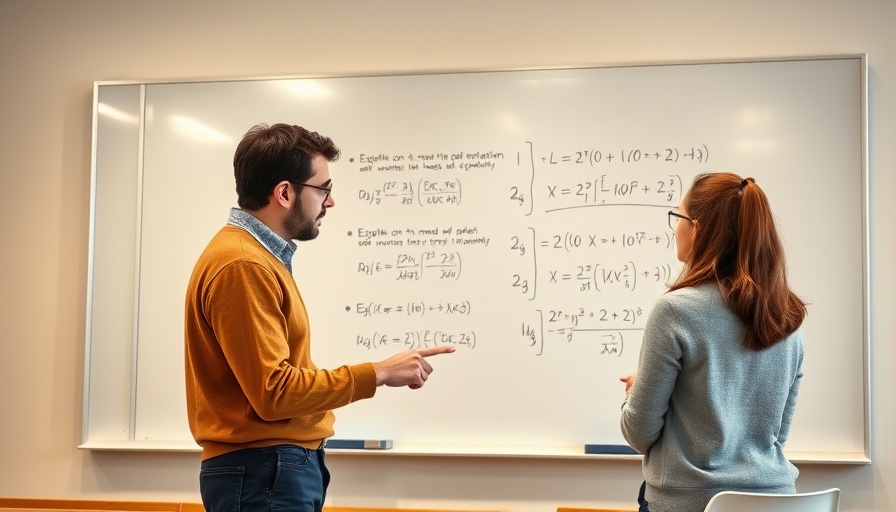
New Innovations in Wind Turbine Efficiency
In a significant leap for renewable energy research, Divya Tyagi, a graduate student at Pennsylvania State University, has rejuvenated a hundred-year-old mathematical model to enhance the efficiency of wind turbines. Originally devised by Hermann Glauert, the equation laid the groundwork for assessing power coefficients in aerodynamics. Yet, despite its historical importance, the equation lacked the nuance necessary to fully grasp the complexities that influence turbine efficiency today.
Understanding the Historical Measurement
Glauert's contributions to wind energy were indeed revolutionary, enabling initial advancements in turbine design. However, as Tyagi delved into the equation's parameters, she recognized critical gaps. By targeting the aerodynamic performance of turbines, she boldly challenged and updated these parameters to create a clearer understanding of how various forces act on turbine blades. This is essential as we transition to more sophisticated energy solutions in our fight against climate change.
Shaping the Future of Renewable Energy
Tyagi explained her process for refining Glauert's original formula, introducing additional coefficients that factor in downwind thrust and bending moments. This nuanced approach enables engineers to visualize the total load on a turbine, moving beyond simplistic calculations. Sven Schmitz, her advisor and a faculty member at Penn State’s Institute of Energy and the Environment, emphasized that understanding added forces is pivotal. “If you have your arms spread out and someone presses on your palm, you have to resist that movement,” he noted. Such analogies help demystify the complexities behind their mathematical model and illustrate the practical implications it holds.
Predicting Changes in Wind Energy Production
The implications of Tyagi's research extend far beyond academia. A seemingly modest 1% boost in the power coefficient could equate to an impressive increase in energy output, potentially sufficient to power an entire neighborhood. This is testament to how incremental improvements can foster significant advancements in renewable technologies. With a tighter grasp on these figures, future engineers will have the tools necessary to optimize turbine designs, contributing positively to global energy needs.
Bridging Theory and Application in Engineering
What is remarkable about Tyagi's work is its accessibility. The revisions of Glauert's formula mean that practitioners in the field can apply these refinements without needing extensive mathematical expertise. Easy integration of these concepts encourages practical experimentation and innovation, signaling a bright future for wind energy efficiency. As Schmitz aptly put it, this newfound knowledge should pave the way for the next generation of wind turbines.
Empowering Communities Through Renewable Energy
This research offers communities a pathway toward sustainable energy. As countries strive for lower emissions and greater energy independence, innovations like Tyagi's can empower residents and governments to harness renewable resources more effectively. By understanding how to maximize wind output, efficiency will not just be an engineer's ambition but a community-driven reality.
Embracing these changes means recognizing the role each innovation plays in combating global challenges. As Tyagi's formula enters classrooms and engineering programs across the globe, it symbolizes a shift toward a more sustainable future powered by cooperation between intellect and environmental need.
As we reflect on Tyagi's significant advancements, we invite readers to explore and support the growth of renewable energy initiatives in their communities. Each step towards sustainable living contributes to a healthier planet for future generations.
 Add Row
Add Row  Add
Add 



Write A Comment